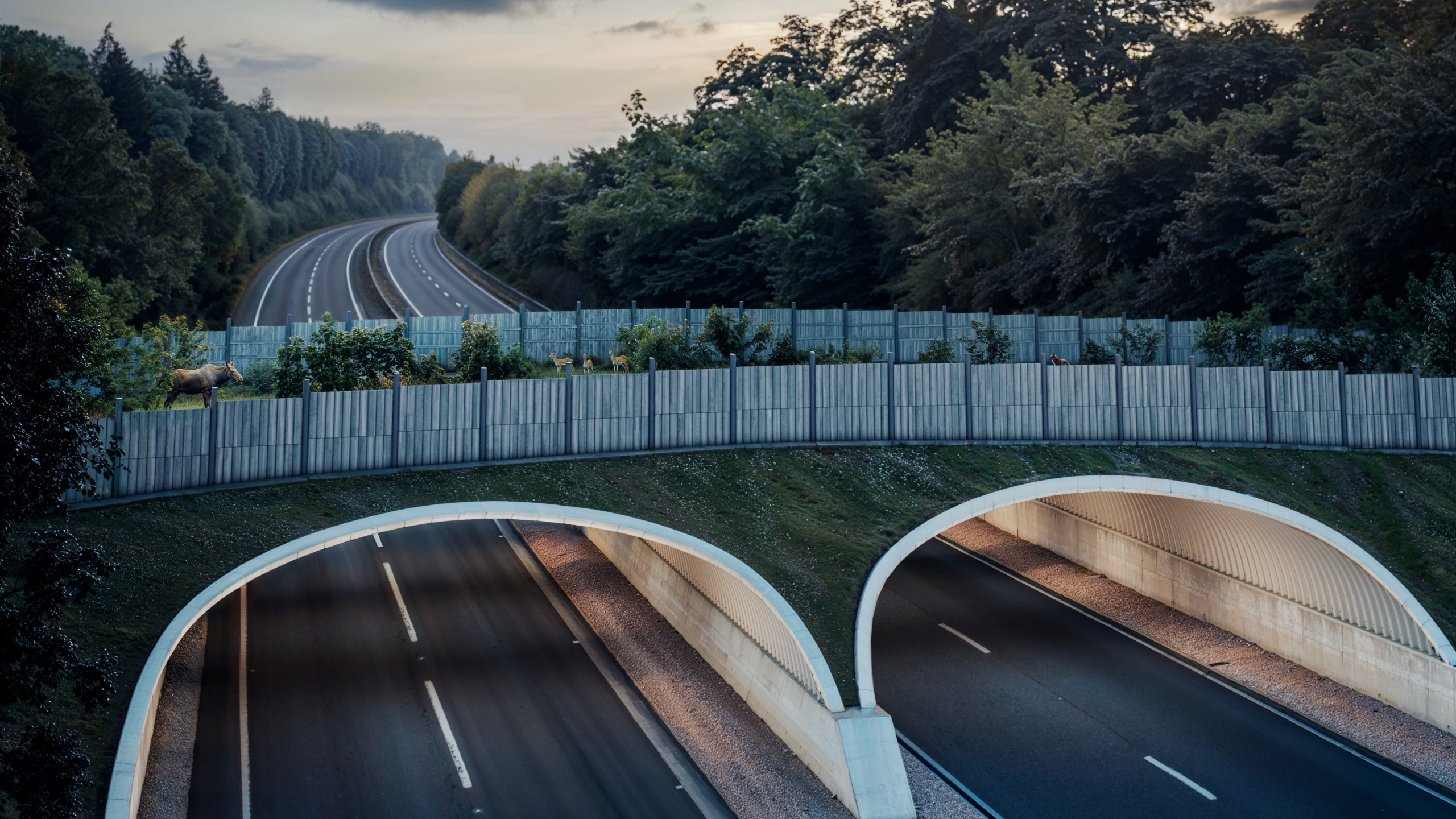As human populations expand, the demand for infrastructure and development continues to grow. New highways, urban expansion, and industrial projects are symbols of economic progress and modern convenience. However, this relentless development comes at a steep cost to wildlife. Habitat destruction, fragmentation, and increased human-wildlife conflicts threaten countless species worldwide.
Amidst this growing crisis, wildlife crossings have emerged as a vital solution to protect animals while allowing human progress to continue.
Balancing progress and preservation: Dangers to wildlife
Development and construction activities pose numerous threats to wildlife. As natural landscapes are altered or destroyed, the effects on animal populations can be profound and often devastating.
- Habitat loss and fragmentation
Large-scale development projects often consume vast tracts of forests, wetlands, and other crucial ecosystems. This destruction displaces wildlife, forcing them into smaller, isolated pockets of habitat. Fragmentation prevents animals from accessing essential resources, such as food, water, and breeding sites. It also reduces genetic diversity by limiting mating opportunities, making populations more vulnerable to disease and environmental changes.
- Disruption of migration patterns
Many species rely on seasonal migration to survive. Development projects, especially highways and urban sprawl, can obstruct these critical movement corridors. For example, pronghorn antelope in North America and elephants in Africa require extensive landscapes to follow their ancient migratory paths. Without safe passage, these animals face starvation, reduced reproductive success, and eventual population declines.
- Human-wildlife conflict
As development encroaches on wild areas, encounters between humans and animals increase. Wildlife searching for food or territory may venture into urban spaces, leading to conflict. Animals such as bears, coyotes, and mountain lions pose risks to human safety, while agricultural interests face economic losses from species like wild boar and elephants damaging crops.
- Increased number of wildlife-vehicle collisions
Highways and roadways crisscrossing natural areas present a significant hazard for animals. Each year, millions of animals worldwide are killed or injured while attempting to cross roads. This not only endangers wildlife but also poses serious risks to motorists. Species like deer, moose, and even endangered animals, such as Florida panthers in the United States suffer high mortality rates due to vehicle collisions.
Wildlife crossings: A path to coexistence
To address these growing challenges, conservationists, engineers, and urban planners have developed innovative solutions in the form of wildlife crossings. These structures provide safe passages for animals to navigate human-altered landscapes without encountering the dangers of roads and railways.
Types of wildlife crossings
Wildlife crossings come in various forms, tailored to meet the needs of different species and landscapes:
- Overpasses: Vegetated bridges that span over highways, allowing animals to cross safely. These are particularly effective for large mammals like deer, elk, and cougars.
- Underpasses and tunnels: Underground passages that provide a safer route for animals beneath roads. These benefit smaller animals, such as amphibians, reptiles, and small mammals, as well as large species like bears and moose.
- Culverts: Smaller tunnels that facilitate the movement of aquatic animals, such as fish and amphibians, allowing them to navigate under roadways and railroads.
Proven success of wildlife crossings
Research and case studies demonstrate the effectiveness of wildlife crossings in reducing animal mortality and preserving biodiversity.
- Ecological bridges in Turkey
- Overpasses for people and animals in Bulgaria
Benefits for everyone
Wildlife crossings not only protect animal populations but also offer significant advantages for human communities and the environment.
- Improved road safety: By reducing wildlife-vehicle collisions, crossings lower the risk of accidents, protecting both drivers and animals. This also leads to substantial cost savings from reduced vehicle damage and healthcare expenses.
- Biodiversity conservation: Crossings promote genetic exchange by reconnecting fragmented habitats, ensuring species’ long-term health and adaptability.
- Ecosystem services: Healthy wildlife populations contribute to balanced ecosystems that provide vital services, such as pollination, pest control, and water purification.
Easing the tension between development and wildlife
As human expansion continues, the tension between development and wildlife conservation remains a pressing issue. Wildlife crossings represent a hopeful and pragmatic solution, allowing animals to navigate increasingly fragmented landscapes safely.
By investing in these structures, we not only protect biodiversity but also create safer, more sustainable environments for future generations. Achieving harmony between progress and nature requires collective effort, innovative thinking, and a commitment to coexist with the wildlife that shares our planet.

